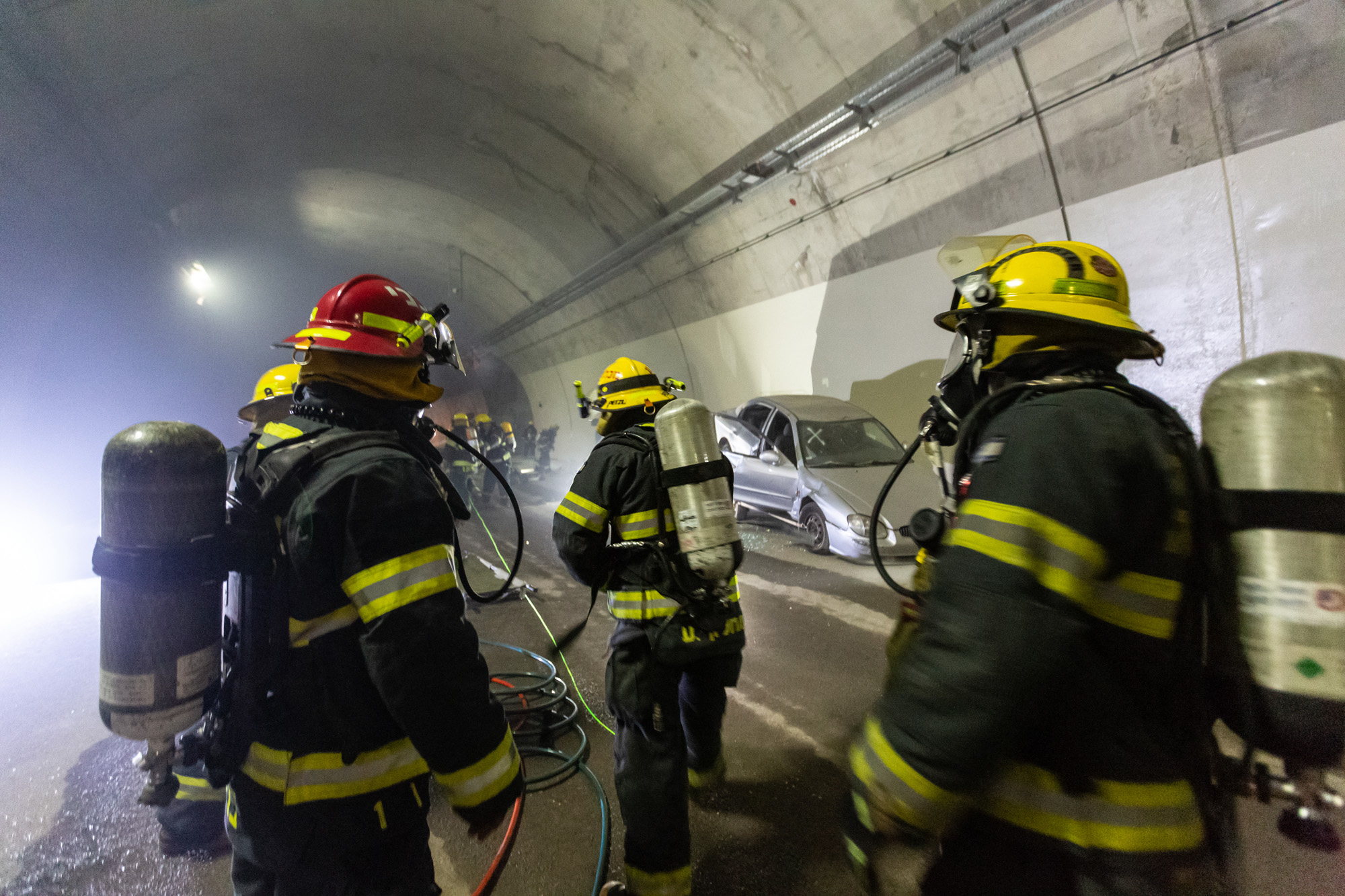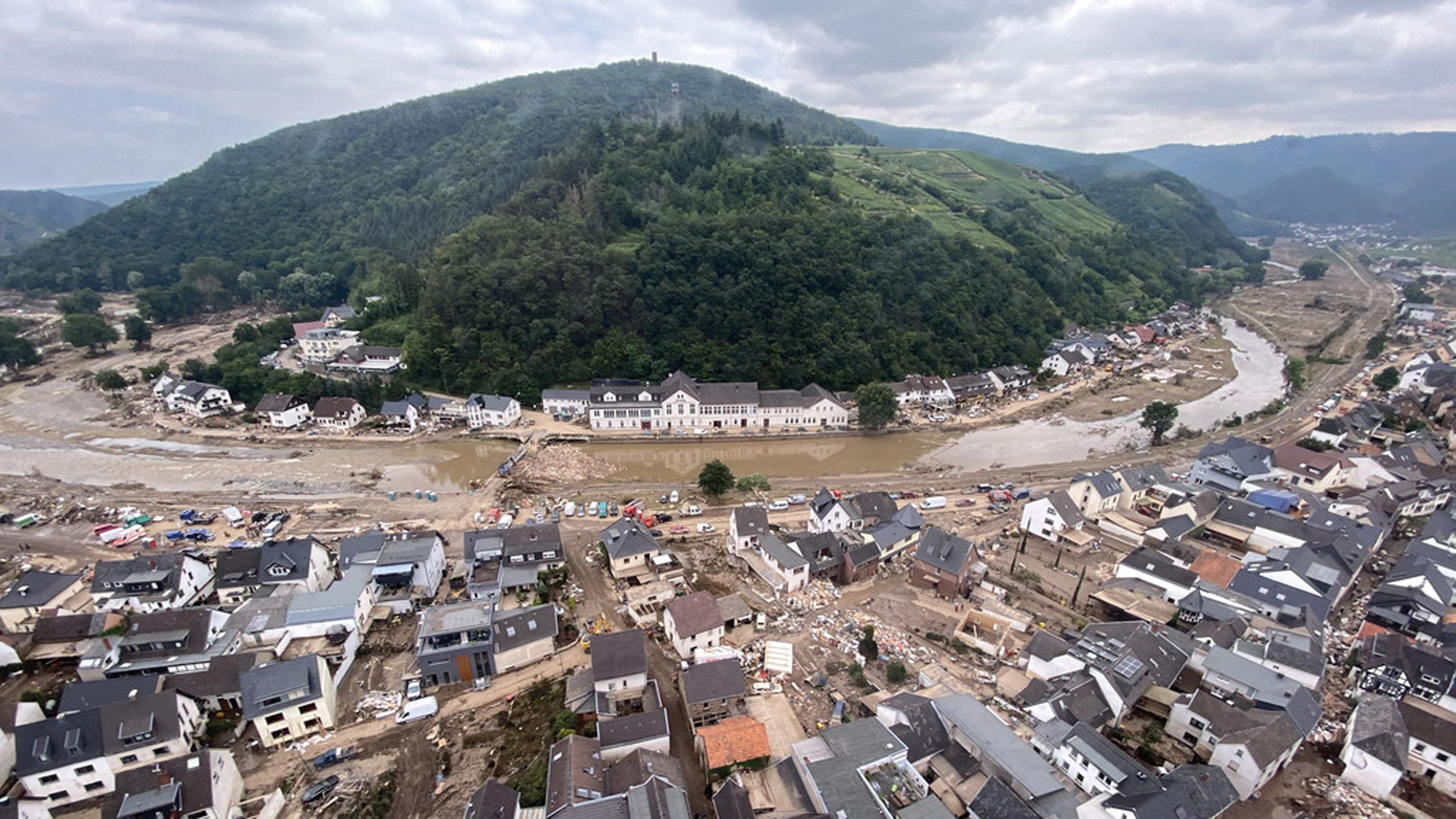Facing floods and other disasters
The floods in the Ahr Valley showed that climate change is making itself felt much faster and more strongly than expected. Therefore, approaches to mitigate the consequences of climate change must also be more radical than planned. The team of the Innopush project »RuLe – Resilience of Urban Living Spaces« reacted promptly and adapted the research to the current conditions.


In the summer, heavy rain caused the Ahr and other streams to burst their banks at record speed – sweeping away bridges, houses, trucks and cars and leaving a picture of devastation in their wake. Entire village communities lost their roof over their heads and had to camp in gymnasiums or on the guest couches of relatives and acquaintances; numerous people even lost their lives. This is where the Rule project, short for »Resilience of Urban Living Spaces,« comes in. In this interdisciplinary project, researchers from Fraunhofer FHR and the Fraunhofer Institutes IMS, LBF, IML, FKIE, INT and IAO are investigating just such catastrophes to find out how to emerge stronger from them. The focus was on the »tunnel fire« and »heavy rainfall« scenarios. How can sensors be used to provide helpful information – for example, on the presence and movement of people or the current performance of the drainage system – that cannot yet be captured purely by sensors? The researchers distinguished between three phases: Before the event, the event itself and the subsequent reconstruction of the infrastructure, which should be as resilient as possible.
The flood disaster showed the limits of previous technology
Due to the current situation, the Fraunhofer Institutes also provided acute assistance to the emergency services: Fraunhofer FHR installed radar sensors at the Steinbach Dam, which was in danger of bursting, to measure the stability of the dam, and Fraunhofer FKIE provided support with regard to the management infrastructure, such as situation imaging. However, the disaster situation also made visible where improvements must be made in the future: for example, numerous technical early warning and control systems have been undermined. One example is the radar level sensors that have been installed on bridges in recent years: Here, there is a small antenna on a cantilever arm that measures the levels of the streams and thus allows forecasts of flooding. Usually this works very well – but only as long as the water flows under the bridge and the bridge exists. However, during the Ahr flood, which more than doubled the previous peak, many stationary measuring stations were lost. The catastrophic situation may well serve as an example for future floods – a glimpse into the crystal ball, so to speak, of what challenges cities and communities will have to face in 2050 or 2060.
RuLe adapted the research to the circumstances
So what can be learned from this disaster for the future? The researchers in the RuLe project also asked themselves this question and developed corresponding solution concepts. For example, instead of using stationary platforms for warning systems, research is increasingly focusing on mobile systems – such as drone-operated or wearable sensors that monitor the stability of buildings during damage events. The Ahr Valley also showed that the use of satellite communication worked very well. This will play an increasingly important role in future rescue systems worldwide. These and comparable disasters show that the expert teams at the Fraunhofer institutes must constantly adapt their research to the rapidly changing environmental conditions. The question of how to provide rescue workers with information about the locations of immobile people – ad hoc and in line with data protection requirements – also takes on a whole new significance in this context.
Another focus besides heavy rain events was the »tunnel fire« scenario. Here, too, the project team demonstrated new system approaches that have not yet been implemented in urban environments, or have only been implemented in rudimentary form – for example, in the area of sensor technology, the detection of people and their movements. In both scenarios, the researchers looked not only at individual technologies or a specific problem, but at the entire chain – from planning to technical solutions to individual processes. RuLe was thus able to respond very flexibly to the challenges of heavy rain events or tunnel fires.